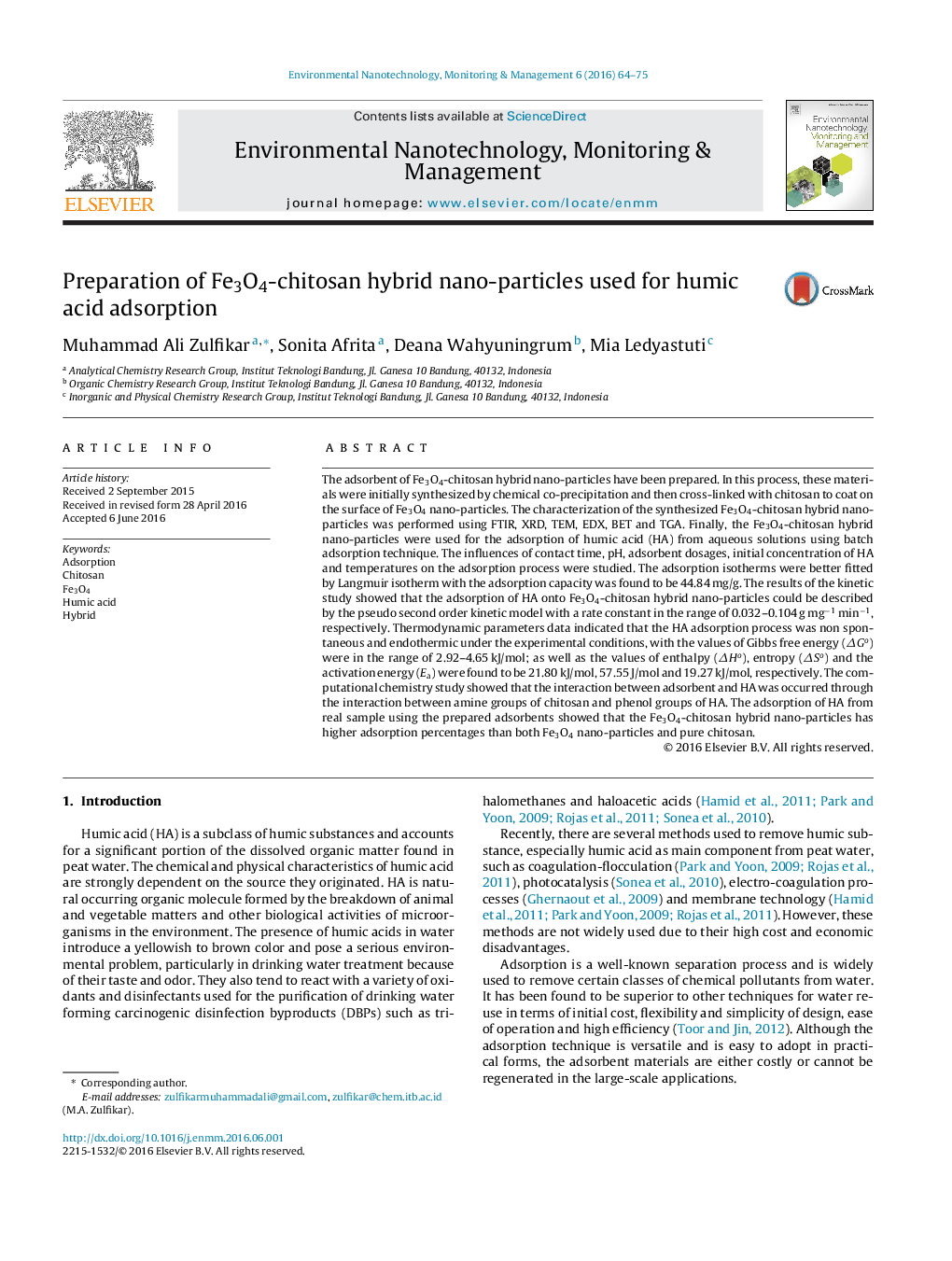| Article ID | Journal | Published Year | Pages | File Type |
|---|---|---|---|---|
| 4424186 | Environmental Nanotechnology, Monitoring & Management | 2016 | 12 Pages |
•Adsorption of humic acid from aqueous solution using Fe3O4-chitosan hybrid nano-particles has been investigated.•Experimental equilibrium data follows Langmuir isotherm model.•The kinetic data of adsorption process follows pseudo-second-order kinetic model.•The Fe3O4-chitosan hybrid nano-particles has a potential of being used as an adsorbent.
The adsorbent of Fe3O4-chitosan hybrid nano-particles have been prepared. In this process, these materials were initially synthesized by chemical co-precipitation and then cross-linked with chitosan to coat on the surface of Fe3O4 nano-particles. The characterization of the synthesized Fe3O4-chitosan hybrid nano-particles was performed using FTIR, XRD, TEM, EDX, BET and TGA. Finally, the Fe3O4-chitosan hybrid nano-particles were used for the adsorption of humic acid (HA) from aqueous solutions using batch adsorption technique. The influences of contact time, pH, adsorbent dosages, initial concentration of HA and temperatures on the adsorption process were studied. The adsorption isotherms were better fitted by Langmuir isotherm with the adsorption capacity was found to be 44.84 mg/g. The results of the kinetic study showed that the adsorption of HA onto Fe3O4-chitosan hybrid nano-particles could be described by the pseudo second order kinetic model with a rate constant in the range of 0.032–0.104 g mg−1 min−1, respectively. Thermodynamic parameters data indicated that the HA adsorption process was non spontaneous and endothermic under the experimental conditions, with the values of Gibbs free energy (ΔGo) were in the range of 2.92–4.65 kJ/mol; as well as the values of enthalpy (ΔHo), entropy (ΔSo) and the activation energy (Ea) were found to be 21.80 kJ/mol, 57.55 J/mol and 19.27 kJ/mol, respectively. The computational chemistry study showed that the interaction between adsorbent and HA was occurred through the interaction between amine groups of chitosan and phenol groups of HA. The adsorption of HA from real sample using the prepared adsorbents showed that the Fe3O4-chitosan hybrid nano-particles has higher adsorption percentages than both Fe3O4 nano-particles and pure chitosan.
